Ah, the humble base layer… Dirty, smelly, and doing the grunt work of your layering system. Sitting next to your skin and dealing with all the sweat and heat generated whilst skiing/boarding, the base layer rarely gets the recognition it deserves, yet remains an absolutely critical part of your mountain clothing. LUEX Snow Travel experts take us through the different fabrics and technologies available, to help you choose the best layers for your next snow trip.
WHAT IS A BASE LAYER?
The base layer is the fundament of your layering system: it sits right next to your skin, and its main function is to manage sweat and moisture. Of course we normally ski and snowboard in cold weather, but we’re not usually looking for warmth from our base layer; many people have a tendency to over-dress in the mountains, which rather than keeping us warm often leads to heavy sweating and subsequent heat loss – very dangerous in sub-zero temperatures! This is why we need a good base layer: to move sweat away from the body, where it can harmlessly evaporate away.
Base layers are generally made from similar materials these days, normally either merino wool or synthetic fibres (typically polyester or polypropylene). While the purpose of the layer remains the same, the different materials achieve it in different ways, with different pros and cons.
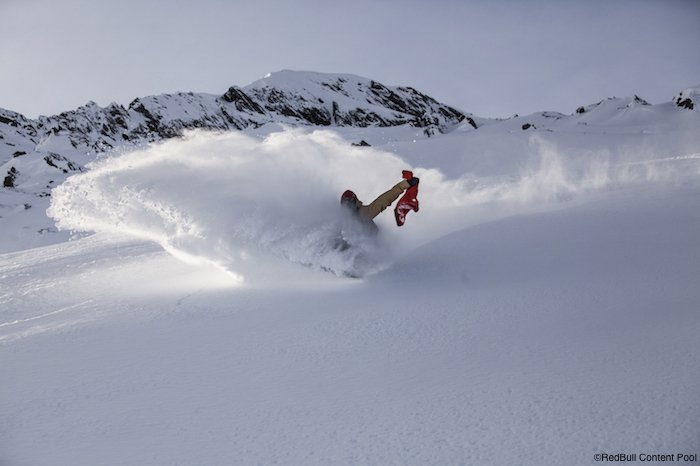
SYNTHETIC BASE LAYERS
Most mountain apparel manufacturers have their own proprietary synthetic fabrics, like Helly Hansen’s Lifa® and Patagonia’s Capilene®, though the materials used are actually pretty similar. Synthetic base layers tend to be cheaper and more durable than merino, and wick sweat much better. However, they also tend to stink very quickly – if you have any compassion for your partners’ olfactory wellbeing, you won’t get multiple days use out of synthetic layers without washing them in between.
Synthetic layers deal with sweat and moisture by wicking it along the fibres and away from your skin. The process – where liquid is drawn along a fibrous path – is properly known as capillary action, though essentially it’s just the same as how a candle wick draws wax along its length. During high output sport, the build up of heat and moisture inside the garment creates a temperature and humidity gradient against the outside, which is the driver of the wicking process. The highly humid air within naturally wants to move towards equilibrium – which means the cooler, drier outside. When the sweat comes into contact with the fabric of the base layer, it is drawn along the fibres and out through tiny gaps in the weave – without being absorbed – to the outside of the garment, where it can evaporate away with out chilling your body.
Due to their excellent moisture management abilities, synthetic base layers are the best of the bunch for high energy activities like ski touring and climbing. They feel nice and smooth against the skin, rarely itch, dry quickly and don’t absorb moisture, so feel less weighty and clammy than wool after heavy perspiration. However, due to their tendency to kick up a stink they are best consigned to shorter adventures and single day trips.
MERINO BASE LAYERS
Unless you’ve been living in a cave in deepest darkest Patagonia for the last few years, you’ll have heard of merino already – it’s been one of the biggest buzzwords in the outdoor industry recently, and it seems like everyone has been jumping on the woolly bandwagon. And for good reason! Merino is nature’s very own version of a base layer, and its almost-too-good-to-be-true properties make it ideal for humans too: it manages moisture well, stays warm even when wet, and due to its in-built anti-bacterial properties can quite literally take WEEKS’ worth of sweat before it starts to smell. Unfortunately it’s also expensive, takes a while to dry, and is often noticeably less durable than synthetics. Be wary of snagging a cut-price bargain, too: low quality merino can be very itchy.
If we’re being pedantic, merino doesn’t technically wick sweat, though the end result is the same. Rather than drawing moisture along the fibres, merino actually absorbs it – the inner core of a merino fibre, known as the cortex, can absorb over 30% of its own weight in liquid. This moisture is then transported to the outside of the garment through the same temperature and humidity gradient outlined above, where it can evaporate away.
Conventional wisdom dictates that materials which absorb so much moisture (like cotton) are a terrible idea on the mountain, as when your energy output drops off all that liquid held next to your skin will chill you very quickly. However, merino has a trick up its sleeve: the outsides of the individual wool fibres are coated in lanolin, a waxy water resistant substance that reduces the feeling of dampness against your skin, and additionally helps to repel light rain.
Merino already seems pretty miraculous, right? It’s about to get even cooler! In addition to retaining its insulating properties when wet, merino actually generates heat when it absorbs moisture. The process is known by the arcane term ‘heat of sorption,’ but it’s actually relatively straightforward: merino fibres absorb water in a reversible chemical reaction, where the interaction of hydrogen bonds gives off heat. The reverse also applies, and heat is taken up by the reaction when the fibres dry out. This basically means that merino garments can act as a ‘buffer’ in changing environments – in cold climates it’s usually relatively more humid outside than inside, so merino ‘conditioned’ to the drier indoor environment will immediately begin to produce heat as it absorbs moisture when you go outside, and vice versa.
On the downside, merino’s huge moisture capacity means it takes a lot longer than synthetics to dry, and it feels pretty heavy and uncomfortable when saturated. It’s best suited to colder weather and lower intensity activities, though due to its really quite incredible odour-resistance, it’s our top pick for longer trips where you may not have the luxury of fresh layers each day: your friends will certainly appreciate your merino when tent-bound in a storm for the third day in a row! However, merino is less durable than synthetics and needs more care when washing and drying. It’s also not cheap, though it’s worth splashing out on higher end brands, as cheap, less fine merino fibres can be really quite itchy; you definitely get what you pay for, here.
HYBRID BASE LAYERS
Hybrid garments are becoming increasingly popular: the mix of merino and synthetics in one piece combines the best aspects of both materials, with very few of the downsides. They are more durable and manage moisture better than pure merino base layers, and are fairly resistant to the sweaty stench that plagues synthetic fabrics (though not quite as much as pure merino – think three days use rather than a week or more). If you want one layer to cover all bases, then a hybrid piece is your best bet, and the type we reach for most days.
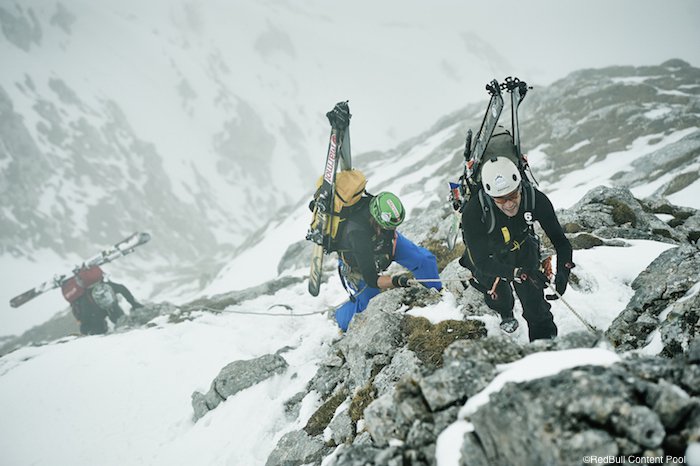
SO WHICH TYPE OF BASE LAYER SHOULD I USE?
WARM WEATHER AND/OR HIGH OUTPUT:
Helly Hansen Dry – Helly Hansen make probably the most iconic base layers on the planet; if you’ve ever left the house and gone outside, chances are that you’ve seen someone sporting HH’s famous striped sleeves. You’ve probably also smelt them too, but that’s by-the-by – without a doubt, HH make some of the finest base layers on the market.
The ‘Dry’ series are made with Helly’s proprietary Lifa® material, a water-hating polypropylene fibre created by HH’s unique manufacturing process – it’s a lot like bursting a water-filled balloon to let the molten-polypropylene flow out of the tiny hole. This creates a much smoother fibre than their competitors, so stench-inducing bacteria have fewer places to hide.
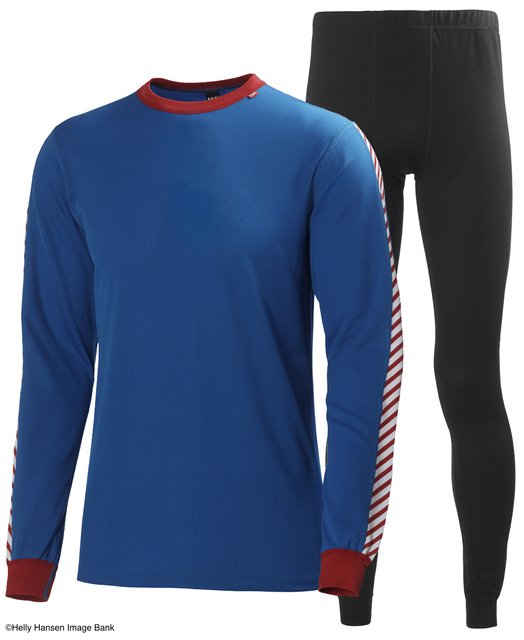
On days when you know you’ll be sweating a lot, HH Dry is the stuff you want to be wearing: it manages moisture better than anything else we know of. It’s relatively cheap and very durable, but please wash it regularly!
Fit: HH tend to make very tight, form-fitting garments, and sizes often seem a little smaller than other brands. If you have any doubt, go up a size.
COLD WEATHER AND/OR LOW OUTPUT:
Icebreaker Oasis – Icebreaker’s Oasis line is made from luxurious 200-weight pure merino wool from New Zealand’s Southern Alps, and its quality really stands out from many of the other brands who’ve jumped on the merino bandwagon. It’s incredibly smooth and comfortable against your skin, and can be worn for weeks at a time without smelling.
Whilst not the absolute best at moisture transport, the Oasis does an impressive job for pure merino, though its ability to regulate temperature helps manage how much you actually sweat in the first place. It also dries relatively quickly, though if you want it to last – and given the price you do want it to last! - you will have to take better care of it than your synthetic base layers. However on those chilly mornings, or when you’re touring hut-to-hut with no room for extra layers, there’s no better choice than Icebreaker merino.
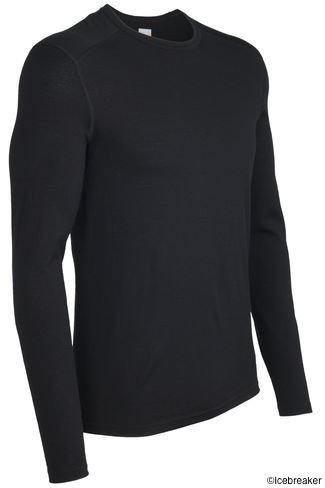
Fit: Tends to be fairly snug. Icebreaker is generally a bit more generous and true to size than HH, but in order to maximise moisture management the Oasis line is still designed to hug your body.
ALL CONDITIONS, EVERYDAY, EVERYTHING:
Helly Hansen Warm Ice – Yes, another HH layer, but trust us: they’re seriously good. Helly’s Warm Ice line blends the best properties of merino and synthetic fibres to create one of the best all-purpose base layers around.
The inner of the garment is made from HH’s proprietary Lifa® fibres, spun into a sweat-wicking mesh; the outer is compromised of high quality merino wool. The synthetic fibres add structure and durability, and as they’re unable to absorb moisture maintain a constantly dry layer next to your skin. Merino’s absorption qualities further enhance Lifa’s wicking powers, by actively sucking moisture through the mesh to where it can evaporate away outside.
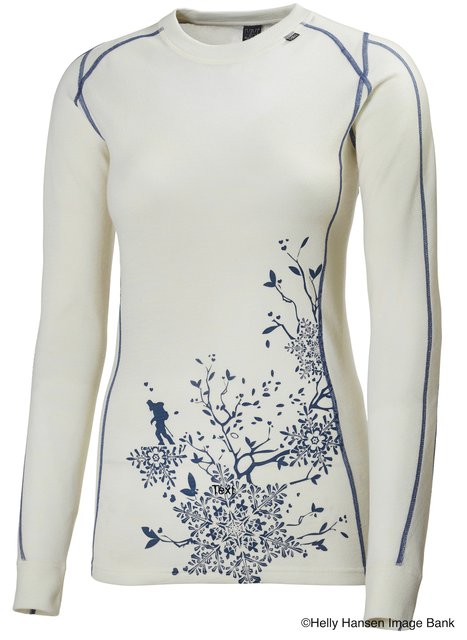
Whilst not quite as odour-resistant as pure merino, you can still get a solid five days use out of your Warm Ice layers without clearing the bar during après ski.
Fit: Like HH’s other layers, these beauties are on the tighter side – the closer they hug your body, the better they can transport moisture. If you’re normally between sizes, definitely take the larger.
Matt Clark – LUEX / LineUpEXplorers

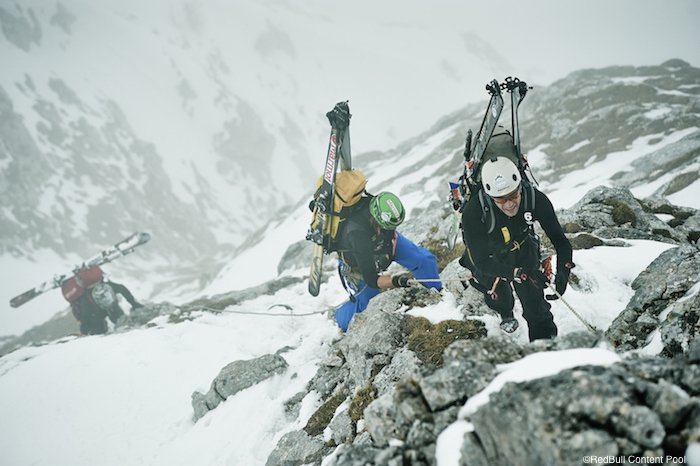
Comments